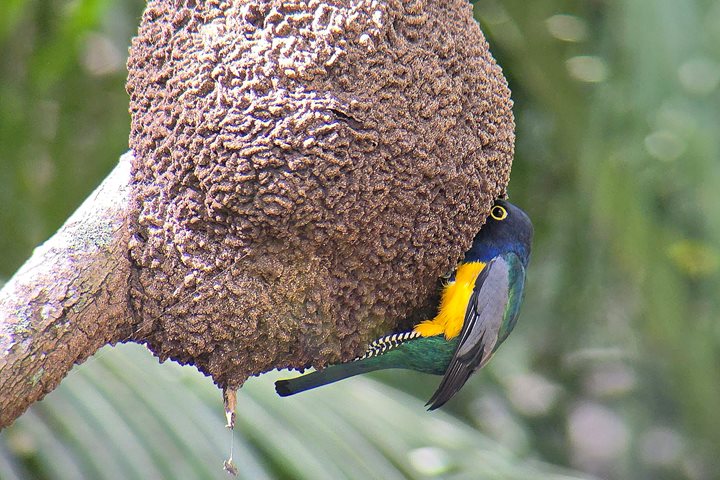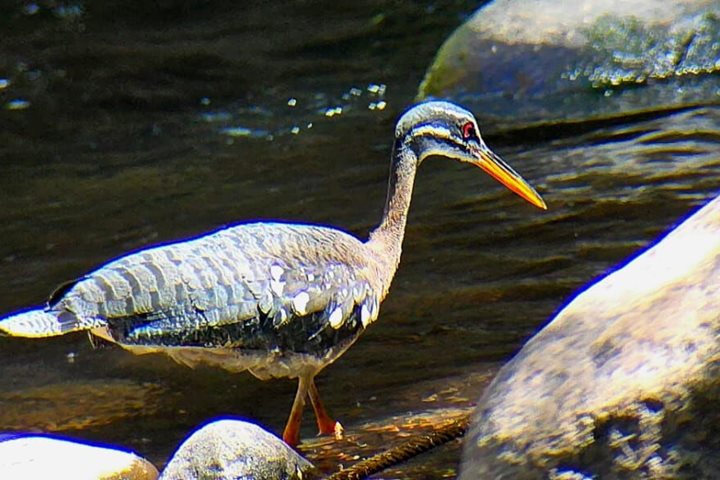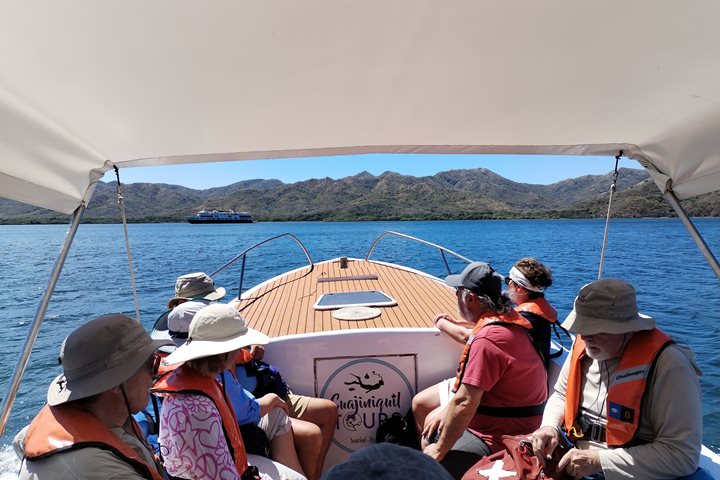The sunrise caught National Geographic Sea Lion sailing by Peninsula de Santa Elena, our day of habitat exploration in one of the most remote areas of Costa Rica.
Known as a unique site due to its geological origin, this region encloses an exposed ophiolitic complex of rock, originated in oceanic crust. What makes it unique is the fact that the depth at which they formed normally doesn’t emerge to the surface.
The beauty of the substrates and tilted cliffs, and the contrast of the green vegetation growing in it, showed us a natural environment where the forest meets the ocean.
We arrived to Murcielago Island, a paradisiac remote place that our guests had to themselves, with opportunities to explore it by hiking or snorkeling. The hikers got breathtaking views of the turquoise and blue waters, the amazing arch formed by the interaction of seismic activity, and marine erosion and the cactus holding on to the cliffs.
After lunch, we sailed north and a group of false killer whales put up a performance to let us get a nice sighting. Then we arrived to Junquillal Bay, a calm water area where we discovered spectacular surroundings of this UNESCO World Heritage Site by expedition landing crafts, hikes, and sea kayaks. While the director of the refuge shared the goals and commitments of the area, the galley surprised us with a delicious beach barbeque dinner as the sun went down. It was the perfect way to end the visit to the coastal Area of Conservation of Guanacaste.









